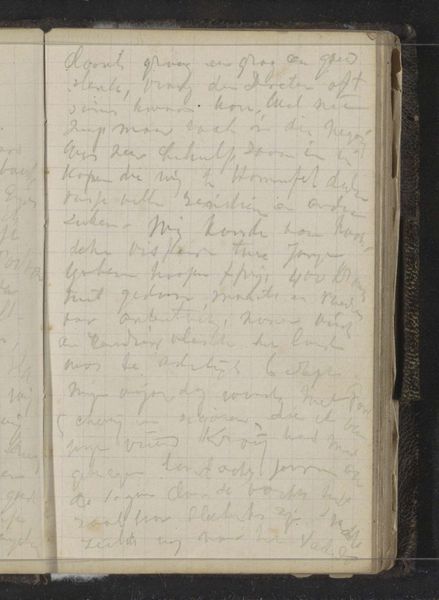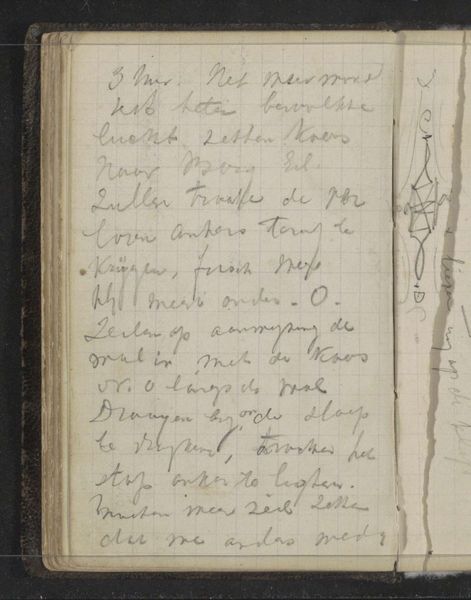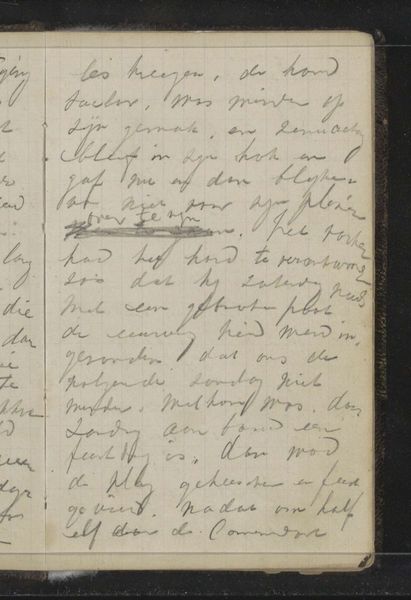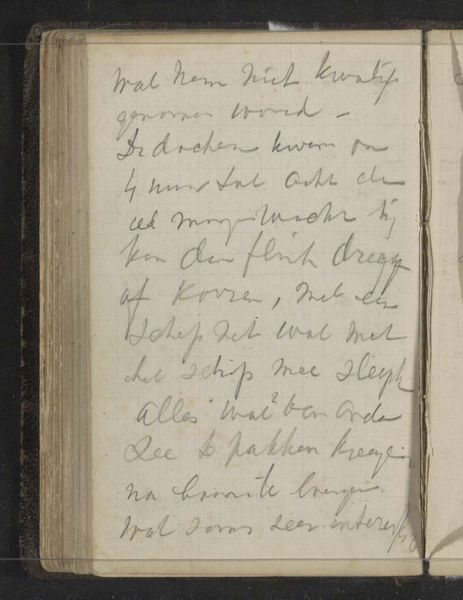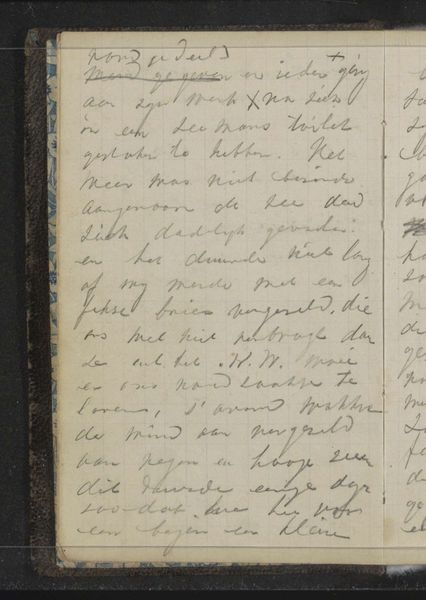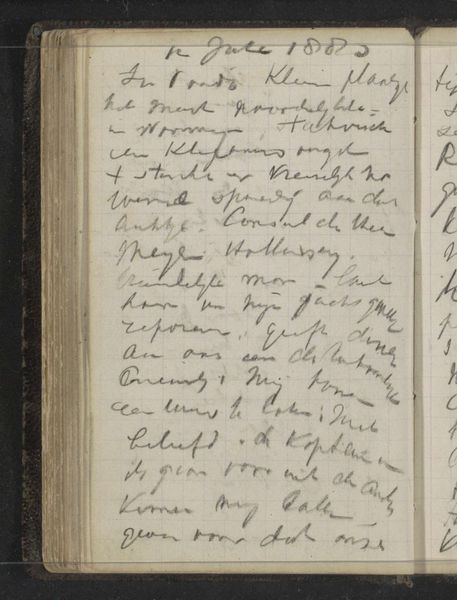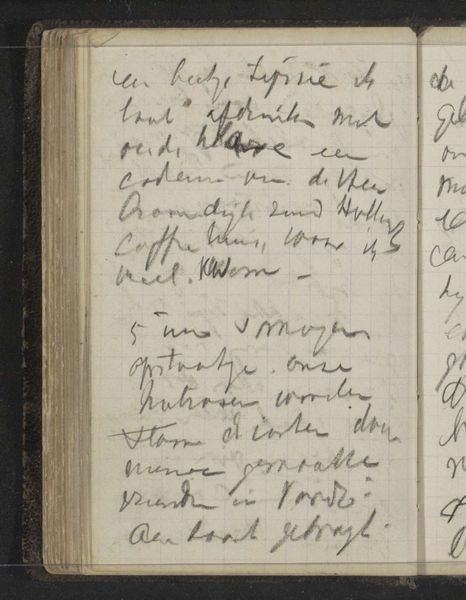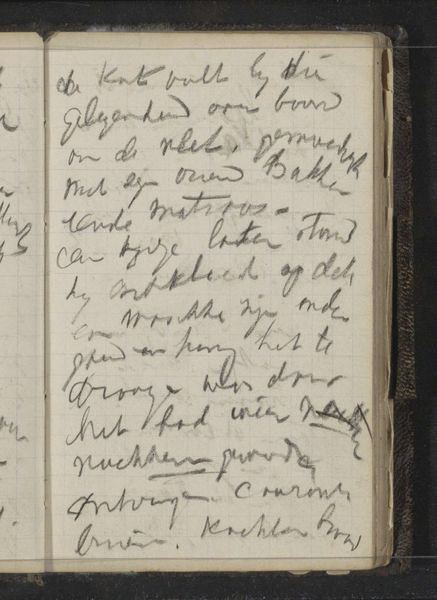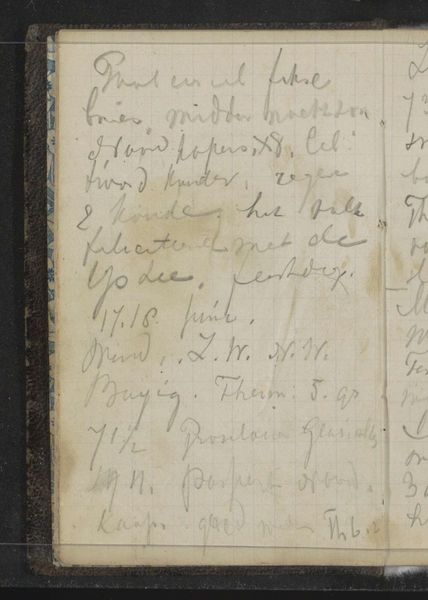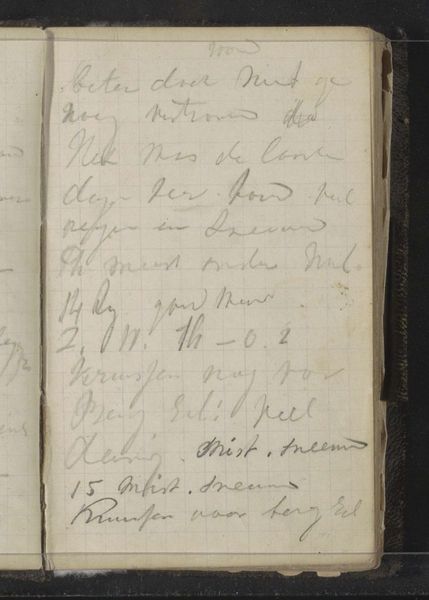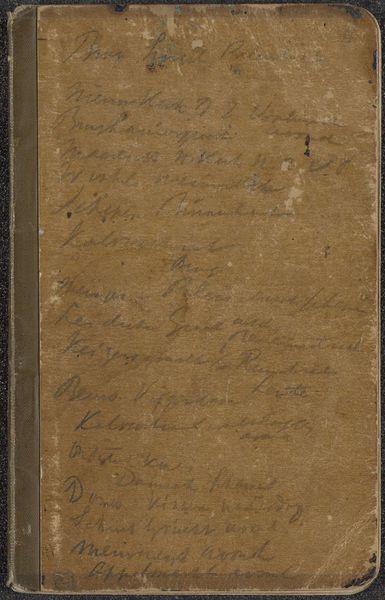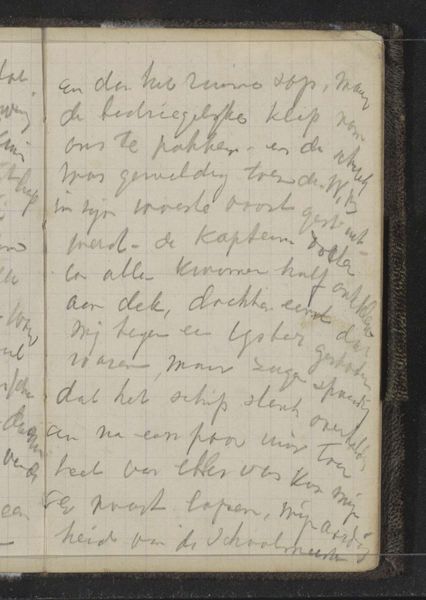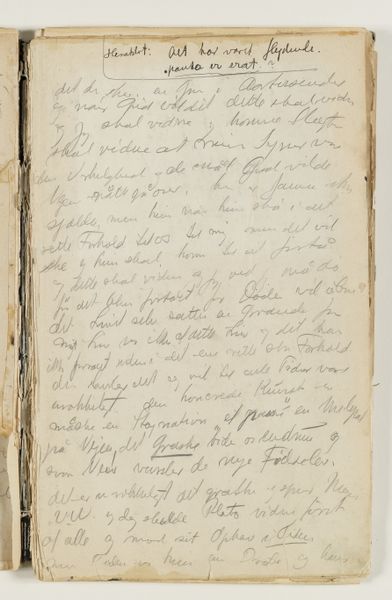
drawing, paper, ink, pen, pastel
#
portrait
#
drawing
#
aged paper
#
self-portrait
#
hand-lettering
#
narrative-art
#
impressionism
#
sketch book
#
hand drawn type
#
paper
#
personal sketchbook
#
ink
#
hand-written
#
hand-drawn typeface
#
sketchbook drawing
#
pen
#
pastel
#
sketchbook art
#
watercolor
Copyright: Rijks Museum: Open Domain
Editor: This work is titled "Reisverslag van medio juli 1880," which translates to "Travel Report from mid-July 1880." It's attributed to Louis Apol, dating roughly from 1880 to 1887. The piece is a drawing combining ink, pen, pastel, and watercolor on paper. I'm immediately struck by the intimacy of it – it feels like peering into someone’s personal thoughts and experiences. What do you see in this work? Curator: I see a compelling artifact of artistic production. Apol’s sketchbook isn’t just a repository of images; it's evidence of labor and a testament to the materiality of art-making. The aged paper, the bleed of the ink, even the cramped handwriting all speak to the conditions under which this work was produced. This challenges our traditional notions of ‘high art.’ Editor: So, it's less about the subject matter and more about… the object itself? Curator: Precisely. We need to consider the societal context. Sketchbooks like this were often integral to an artist’s process. Apol used readily available materials, reflecting a democratization of art practices. Think about how mass-produced paper and commercially available inks made art creation more accessible, blurring lines between professional and amateur. Editor: That’s a great point. It also looks like a type of handwriting. I'm not sure I can even read most of the letters. Curator: Consider the consumption of art at the time. How was Apol hoping the sketchbook to be consumed? What were the conditions of display, the economy of the market? Was it personal, public, commercial? Also, notice the hand-lettering within; it shows how Apol regarded craftsmanship. Editor: So, we're looking at the means of production and circulation to understand the art differently. Curator: Exactly. By focusing on the materials, the processes, and the social environment in which "Reisverslag van medio juli 1880" was created, we can re-evaluate the artistic boundaries in general. What were you most impacted by learning about the artwork? Editor: I like the notion of reframing our idea of art into a social commentary and also its potential to change the traditional view of craftsmanship. Thanks for enlightening me!
Comments
No comments
Be the first to comment and join the conversation on the ultimate creative platform.
